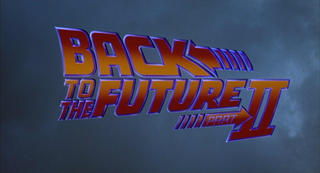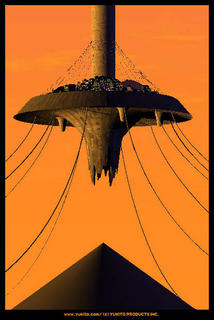Living the Sci Fi Dream

Flash back to 1989: Back to the Future Part II. Being only 9, I was amazed at the flying cars that run on garbage, hoverboards, hologram "Jaws", and fully automated gasoline stands. Although the year 2015 seemed like a long way off, I couldn't fathom any of these technologies coming to be.
It seems as though we are stepping into the future.

Instead of Mr. Fusion to run our cars, we will soon see an influx of Hydrogen Fuel Cell cars. Unlike electric hybrids, these cars will have full-out racing performance potential. Mazda has recently showcased their RX-8 Hydrogen edition at the Tokyo Motor Show. When running on hydrogen, these cars will give off little more than water vapor. Unfortunately, the dirty little secret of hydrogen is where the hydrogen comes from. Oil companies are clamoring to make the switch; burning fossil fuels to make hydrogen, instead of just putting it right in your car. Many of those in the Blogosphere (that's right, I said it), believe that this switch could prove fruitless, unless we are using renewable resources to make the Hydrogen. Things like solar and wind power are best bets. Right now it looks like 90% of Hydrogen will be made through the burning of fossil fuels, 10% through nuclear power and 0% through renewable resources. I guess those oil tycoons just aren't ready to throw in the towel.
Instead of flying cars, we will have cars that drive themselves. Stanford Racing Team's "Stanley" won the DARPA Challenge recently, collecting $2 million in prize money. The challenge, issued by the US military, was to have a car navigate a 190 mile stretch in the Mojave Desert. The catch was that the car had to be unmanned, nor driven remotely. In order to collect the prize, teams had to finish the course in under 10 hours. The fastest car, of course is the winner. This years race was quite an improvement on 2004's. Last year most cars only got 10-15 miles, and some as little as 5. The practical applications for this kind of technology are quite vast. The military can use these kind of dummy cars to follow other soldiers, or use them on their own for reconnaissance work. Cars can be equipped with sensors that let the driver know if they are erratically changing lanes, or even correct their steering to prevent accidents. I don't know if we'll ever get to the point of starting the car and taking a nap while the car drives (the cars in the tournament went an average of 20 mph), but we may soon see this in even the most mundane of cars. Remember, for a long time seatbelts and windsheild wipers weren't manditory on cars.
You can read more about the race and see pictures here: http://news.com.com/2300-11394_3-5892103-2.html
I don't know if we'll see a hoverboard any time soon, but we may be seeing holograms. The Royal Swedish Academy of Sciences awarded the prize to Americans Roy Glauber and John Hall, and to Germany's Theodor Haensch, for studying light and harnessing lasers to create a "measuring stick" to gauge frequencies with extreme precision. Basically what this means is we can now measure frequencies within an accuracy of 15 digits. This also means extreme control over light and light frequencies. Can anyone say hologram TV? Even one of the prize winning scientists think its possible. I wouldn't throw out that High Def TV yet, though. This technology is far in the future.
On a bit more of a distopian note, Nippon Telegraph & Telephone company has developed a headset that is a mild form of mind control. It was developed to make video games more "realistic", and involves an electrical current "messing with the delicate nerves inside the ear that help maintain balance." It is said to have a similar feeling to being drunk, or melting into unconsciousness when under anesthesia, except its more definitive and really feels like someone is reaching out to your brain to control you. Scary! "Nippon Telegraph & Telephone" is the top telephone company in (you guessed it) Japan.

Finally, have you heard what NASA is up to? They're having an open contest to see who can build a self powered robot that can climb an elevator of galactic proportions. NASA is toying with the idea of making a "Space Elevator" in which a ribbon would extend from the ground, and reach up to space. Made from carbon-chain nanotubes, the 8" ribbon would be stronger than steel, allowing robots to ascend to the space station carrying supplies... Are you kidding me? Not that I don't want it to happen, but this idea not only seems quite "out there" but very impractical. It reminds me of reading "Battle Angle Alita" growing up. In this fictional future world, there was a fabled "floating city" that was suspended above the earth by a large shaft cutting through the atmosphere and counterbalance in orbit. Sound confusing? Well, its almost the same as what NASA is trying to do.
I guess that's it. I just wanted to talk a little bit about some of these things. It seems like a lot more breakthroughs are happening these days.

1 Comments:
Good GOD! Ok, maybe news travels slower on the other side of the world...but the NASA space elevator contest is over. And nobody won. All the designs sucked too much. Oh i have a blog now too: trappedstateside.blogspot.com
Post a Comment
<< Home